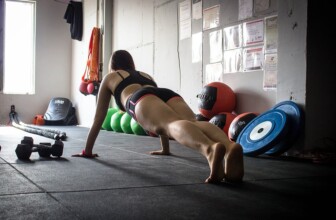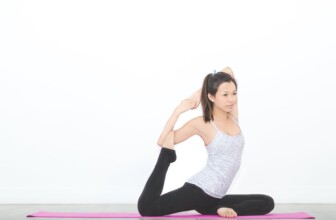Elevate Your Fitness: The Ultimate Guide to Effective Home Workouts
Introduction
In today's fast-paced world, finding the time for fitness can be challenging. However, with the rise of home workouts, the barriers to exercise are rapidly diminishing. Home workouts offer flexibility, convenience, and the ability to tailor exercises to fit your individual needs. This guide aims to provide you with the ultimate toolkit, featuring expert insights, FAQs, resources, and real-life case studies to elevate your fitness journey.
Section 1: Understanding Home Workouts
Home workouts encompass a range of exercises you can perform in the comfort of your space. Here are some fundamental elements:
Benefits of Home Workouts
- Convenience: Access your gym without traveling.
- Cost-Effective: Save on memberships and commuting costs.
- Flexibility: Create a workout schedule that fits your needs.
Types of Home Workouts
- Bodyweight Training: Exercises such as push-ups, squats, and burpees.
- Resistance Training: Using weights, bands, or household items.
- Cardio: High-intensity interval training (HIIT), dancing, or jogging in place.
- Yoga or Pilates: Focusing on flexibility and core strength.
Section 2: Setting Up Your Home Gym
Creating an effective space for workouts at home is pivotal for motivation and effectiveness.
Essential Equipment
- Yoga Mat: Provides support and comfort.
- Resistance Bands: Versatile tools for strength training.
- Dumbbells or Kettlebells: Effective for muscle building.
- Stability Ball: Great for core workouts.
Space Considerations
When setting up your workout area, consider the following:
- Lighting: Opt for well-lit spaces.
- Ventilation: Ensure airflow to keep you cool during workouts.
- Minimal Distractions: Keep your area clutter-free to enhance focus.
Section 3: Designing Your Workout Plan
Creating a personalized workout plan can drastically improve your effectiveness and interest. Here’s how to structure one:
Assessing Your Fitness Level
Begin by evaluating your current fitness level. Questions to consider include:
- How many push-ups can you perform?
- What is your cardiovascular endurance?
- Do you have any injuries or limitations?
Structuring Your Workout
Build your plan around the following components:
- Frequency: Aim for 3-5 workouts per week.
- Variety: Mix different types of workouts (strength, cardio, flexibility).
- Duration: Each session should last between 30-60 minutes.
Section 4: Staying Motivated
Persistence is key to any successful fitness journey. Here are some strategies to keep you motivated:
Setting SMART Goals
Make your fitness goals Specific, Measurable, Achievable, Relevant, and Time-Bound. For example:
- Instead of saying "I want to get fit," set a goal like "I will complete three strength training sessions each week for the next month."
Tracking Progress
Utilize apps or journals to track your workouts. This visibility can drive motivation by showing your progress over time.
Section 5: Nutrition and Recovery
Food fuels your workouts, and recovery is crucial for overall improvement.
Nutritional Basics
Focus on a balanced diet incorporating:
- Proteins: Essential for muscle repair.
- Carbohydrates: Energy sources.
- Fats: Support overall bodily function.
Recovery Techniques
To enhance recovery, consider:
- Hydration: Drink plenty of water post-workout.
- Stretching: Incorporates cooldowns to reduce muscle stiffness.
- Sleep: Aim for 7-9 hours of quality sleep for optimal recovery.
Section 6: Adapting Workouts By Skill Level
Understanding your fitness level helps in customizing workouts effectively.
Beginners
- Focus: Basic mechanics and form.
- Exercises: Bodyweight training, short yoga sessions.
Intermediate
- Focus: Developing endurance and strength.
- Exercises: Introduce weights, higher intensity in cardio.
Advanced
- Focus: Challenge established limits.
- Exercises: Weighted circuits, advanced HIIT.
Section 7: Overcoming Challenges in Home Workouts
Every fitness journey encounters obstacles. Here’s how to overcome them:
Common Challenges
- Lack of Motivation: Try varying your routines.
- Limited Space/Resources: Use bodyweight exercises or improvise with household items.
- Boredom: Incorporate new challenges, such as learning a new sport.
Strategies to Stay On Track
- Workout with Friends: Virtual training can foster accountability.
- Create a Schedule: Designate workout days and times.
- Reward System: Treat yourself when you accomplish goals.
Section 8: Advanced Techniques and Trends
As you progress, consider incorporating advanced techniques and trends into your routine.
High-Intensity Interval Training (HIIT)
HIIT workouts alternate short bursts of intense activity with rest or lower-intensity exercise. This strategy maximizes calorie burn and boosts cardiovascular health.
Interactive Online Platforms
Platforms like Peloton or Beachbody offer live classes, connecting communities and providing structured workouts.
Wearable Technology
Fitness trackers and smartwatches can help monitor heart rate, calories burned, and more, providing real-time feedback.
Q&A Section
Q1: How often should I work out at home?
A: Generally, 3-5 times a week is recommended, balancing cardio, strength, and flexibility workouts.
Q2: What if I don't have weights?
A: Utilize bodyweight exercises like squats, push-ups, and lunges. Household items like water bottles can also serve as weights.
Q3: Can I get fit without going to a gym?
A: Absolutely! Many have achieved strength, endurance, and overall fitness through dedicated home workouts.
Q4: How do I avoid injury while exercising at home?
A: Focus on proper form, start slow, listen to your body, and ensure a thorough warm-up and cooldown.
FAQ Section
What is the best time to work out at home?
Answer: There’s no "best" time for everyone; choose a time when you feel most energetic and can maintain consistency.
Can home workouts be as effective as gym workouts?
Answer: Yes, with proper planning and execution, home workouts can be equally effective as gym workouts.
Are there any specific diets I should follow?
Answer: Aim for a balanced diet, rich in nutrients. Consulting a nutritionist for personalized diet plans is beneficial.
Resources
| Source | Description | Link |
|---|---|---|
| American Council on Exercise (ACE) | Offers guidance on effective home training. | acefitness.org |
| MyFitnessPal | Calorie tracking app to help gauge nutritional intake. | myfitnesspal.com |
| Yoga with Adriene | YouTube channel for yoga sessions. | Yoga with Adriene |
| Fitness Blender | A range of free home workout videos. | fitnessblender.com |
Conclusion
In conclusion, effective home workouts are within your grasp with the right tools, plans, and motivation. By establishing a structured workout routine, prioritizing nutrition, and embracing recovery, you can elevate your fitness journey right from the comfort of your home.
Key Takeaways:
- Set realistic fitness goals and track your progress.
- Create a motivating workout environment and leverage various resources.
- Adapting your workouts according to your skill level is essential for sustained growth.
Future Trends:
The future of fitness may increasingly intertwine with technology, creating even more interactive and personalized workout experiences.
Disclaimer
This article is for informational purposes only and should not be considered medical advice. Always consult with a healthcare professional before starting new exercise or nutrition programs, especially if you have pre-existing conditions or concerns.
By transforming these ideas into actionable plans, you can fully embrace the potential that home workouts offer, tailoring them to suit your lifestyle and promote lasting results. Happy exercising!










